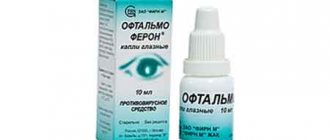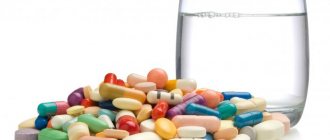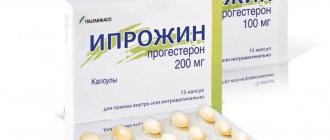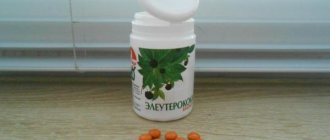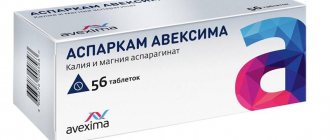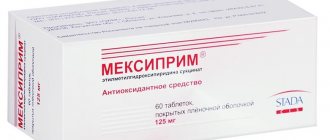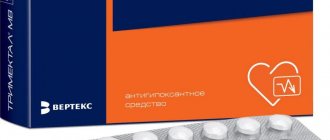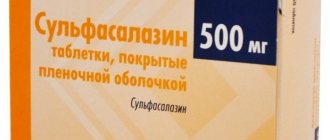The antidepressant Ixel (Milnacipran - international name) is often used for depressive conditions, anxiety disorders and disturbances in the functioning of the nervous system.
The drug normalizes the general condition, improves the psyche and promotes rapid recovery of the body.
The drug is available in the form of capsules with a gelatin structure, the size range of which is No. 4. The capsules have an orange cap with a pink tint, and there is a black imprint “IXEL” on the surface of the capsules. Inside the capsules there is a powdery mixture with a white or almost white color; they are contained in blisters of 14 pieces. Cardboard packages contain 2 or 4 blisters.
Features of the composition
The composition includes the following components:
- the main active ingredient is milnacipran hydrochloride;
- calcium hydrogen phosphate dihydrate;
- carmellose calcium;
- povidone K30 (polyvidone K30);
- anhydrous colloidal silicon dioxide;
- magnesium stearate;
- talc.
Components of the shell:
- titanium dioxide (E171);
- iron oxide red (E172);
- iron oxide yellow (E172);
- gelatin.
Pharmacological properties
Ixel is an antidepressant with a wide spectrum of effects. Refers to selective reuptake inhibitors of monamines - serotonin and norepinephrine. This drug does not have a sedative effect. When using the medicine, the following effects on the body are observed:
- there is a physiological improvement in sleep;
- insomnia goes away;
- memory improves;
- when used, there is no negative impact on cognitive function;
- does not have a negative effect on heart function or blood pressure, which is especially important for older people who take corticotropic medications for a long period of time.
After oral administration, Ixel is rapidly absorbed. The level of bioavailability of the drug is almost 85%, while bioavailability does not depend on the nature and mode of food intake.
The highest level of concentration in the blood occurs approximately 120 minutes after administration of the drug. After the medication is reused, an equilibrium state can be achieved in about two to three days. The degree of protein binding may be approximately 13%.
The drug is eliminated within 16 hours. The main excretion occurs through the kidneys, almost 90% of the dose taken.
Complete elimination of the drug occurs within 2-3 days.
ICSEL
Capsules
hard gelatin, size No. 4, cap – orange-pink with “IXEL” imprint in black, body – orange-pink with “25” imprint in black; the contents of the capsules are a white to almost white powder; the presence of conglomerates (lumps) is allowed, which, when pressed with a glass rod, easily turns into powder.
| 1 caps. | |
| milnacipran hydrochloride | 25 mg |
Excipients: calcium hydrogen phosphate dihydrate – 50.925 mg, calcium carmellose – 22.15 mg, povidone K30 – 2.1 mg, colloidal silicon dioxide – 0.625 mg, magnesium stearate – 2.1 mg, talc – 2.1 mg.
Composition of the capsule cap:
titanium dioxide – 0.286 mg, red iron oxide dye – 0.024 mg, yellow iron oxide dye – 0.036 mg, gelatin – up to 14.3 mg.
Composition of the capsule body:
titanium dioxide – 0.494 mg, red iron oxide dye – 0.042 mg, yellow iron oxide dye – 0.062 mg, gelatin – up to 24.7 mg.
14 pcs. – blisters (2) – cardboard packs. 14 pcs. – blisters (4) – cardboard packs.
Capsules
hard gelatin, size No. 3, cap – orange-pink with “IXEL” imprint in black, body – orange-brown with “50” imprint in black; the contents of the capsules are a white to almost white powder; the presence of conglomerates (lumps) is allowed, which, when pressed with a glass rod, easily turns into powder.
| 1 caps. | |
| milnacipran hydrochloride | 50 mg |
Excipients: calcium hydrogen phosphate dihydrate – 101.85 mg, calcium carmellose – 44.3 mg, povidone K30 – 4.2 mg, colloidal silicon dioxide – 1.25 mg, magnesium stearate – 4.2 mg, talc – 4.2 mg.
Composition of the capsule cap:
titanium dioxide – 0.392 mg, red iron oxide dye – 0.033 mg, yellow iron oxide dye – 0.049 mg, gelatin – up to 19.6 mg.
Composition of the capsule body:
titanium dioxide – 0.294 mg, red iron oxide dye – 0.139 mg, yellow iron oxide dye – 0.132 mg, gelatin – up to 29.4 mg.
14 pcs. – blisters (2) – cardboard packs. 14 pcs. – blisters (4) – cardboard packs.
pharmachologic effect
Broad-spectrum antidepressant, selective monoamine reuptake inhibitor (norepinephrine and serotonin).
Milnacipran does not bind to m-cholinergic receptors, α1-adrenergic receptors, histamine H1 receptors, as well as dopamine D1 and D2 receptors, benzodiazepine and opioid receptors.
It does not have a sedative effect, physiologically improves night sleep, and does not have a negative effect on cognitive function.
Milnacipran has virtually no effect on the conduction system of the heart and blood pressure, which is especially important for elderly patients who are constantly taking cardiotropic drugs.
Pharmacokinetics
Suction
After oral administration, milnacipran is well absorbed. Bioavailability is about 85% and does not depend on the characteristics and diet. Cmax in plasma is achieved approximately 2 hours (Tmax) after oral administration. After taking the drug in a single dose of 50 mg, Cmax is about 120 ng/ml, Cmax is directly proportional to the dose taken.
Distribution
After repeated doses of the drug, Css is achieved within 36-48 hours, and it is 70-100% greater than after taking a single dose. Plasma protein binding is 13%. Vd of milnacipran is about 5 l/kg.
Metabolism
Milnacipran is practically not metabolized, there is no active metabolite, it is conjugated with glucuronic acid.
Removal
T1/2 of milnacipran is 6-8 hours after a single dose, while T1/2 of the active D-isomer is 8-10 hours, and the L-isomer is 4-6 hours.
Renal and extrarenal clearance are equivalent, 55% of the administered dose is excreted unchanged by the kidneys (24% L-isomer and 31% D-isomer), in the form of a conjugate with glucuronic acid - 17% of the L-isomer and only 2% of the D-isomer.
About 8% is excreted as N-desethylmilnacipran. Total ground clearance is about 40 l/h.
During a course of treatment, milnacipran is completely eliminated from the body within 2-3 days after stopping the drug.
Pharmacokinetics in special groups of patients
In patients with impaired renal function, the rate of elimination of milnacipran is reduced in proportion to the severity of the disease.
AUC in patients with mild chronic renal failure (creatinine clearance is 50-80 ml/min), moderate (creatinine clearance 30-49 ml/min) and severe (creatinine clearance 5-29 ml/min) increases by 16, respectively, compared to healthy volunteers %, 52% and 199%, and T1/2 - by 38%, 41% and 122%.
In patients with mild to moderate hepatic impairment (class A and B on the Child-Pugh scale), AUC and T1/2 do not differ from the corresponding indicators in healthy volunteers.
In patients with severe liver failure (class C on the Child-Pugh scale), these parameters are higher than in healthy people by 31% and 55%, respectively, and therefore some caution is required when prescribing the drug Ixel to this category of patients, although correction of the dosage regimen and not required.
The Cmax and AUC of milnacipran in elderly patients (over 65 years of age) compared to younger individuals is 30% higher (due to a decrease in CC with age), however, no special adjustment of the dosage regimen is required in elderly patients with unimpaired renal function .
Cmax and AUC of milnacipran in women are 20% higher than in men; no change in dosage regimen is required.
Indications
- major depressive episode in patients over 18 years of age.
Contraindications
- simultaneous use of non-selective and selective MAO inhibitors types A and B, as well as agonists of serotonin 5HT1D receptors (including sumatriptan), digoxin;
- simultaneous use with epinephrine, norepinephrine, clonidine and similar compounds;
- uncontrolled arterial hypertension, severe or unstable course of coronary artery disease, since these conditions may be aggravated due to side effects of the drug;
- concomitant obstruction of the urinary tract (mainly with prostatic hyperplasia);
- lactation period (breastfeeding);
— age up to 18 years;
- hypersensitivity to milnacipran and other components of the drug.
Carefully
the drug should be prescribed to patients with renal failure (a dose reduction may be required due to the prolongation of T1/2 of milnacipran); angle-closure glaucoma; arterial hypertension or heart disease, in which an increase in heart rate is undesirable; epilepsy (incl.
in the anamnesis); liver cirrhosis or nutritional disorders; patients with a history of indications of impaired urine outflow (especially in patients with prostatic hyperplasia and other urinary tract diseases); patients with a history of blood coagulation disorders (cases of bleeding have been described during treatment with serotonin reuptake inhibitors); patients taking diuretics or other drugs that can cause hyponatremia (cases of hyponatremia developing while taking serotonin reuptake inhibitors have been described, which may be associated with the syndrome of inappropriate ADH secretion); patients simultaneously receiving indirect anticoagulants (for example, warfarin), antiplatelet agents (including acetylsalicylic acid and other NSAIDs) or other drugs that may increase the risk of bleeding; elderly patients.
Dosage
Ixel is taken orally during meals.
The average daily dose of the drug in adults is 100 mg. The daily dose should be divided into 2 doses of 50 mg (1 capsule in the morning and evening).
Patients with renal failure
dose adjustment of the drug is necessary. The daily dose is reduced depending on the degree of renal dysfunction. The following dose selection scheme is recommended:
| CC (ml/min) | Daily dose |
| ≥60 | 50 mg x 2 times |
| 30-60 | 25 mg x 2 times |
| 10-30 | 25 mg |
As with other antidepressants, the effectiveness of milnacipran appears on average after 1-3 weeks of continuous use. To prevent relapse, treatment should be continued for several months (usually 6 months).
The duration of use of the drug is determined individually.
To avoid the development of withdrawal syndrome, discontinuation of Ixel should be carried out gradually and with careful monitoring of the patient.
Adverse reactions are classified according to systemic organ classes and listed according to the following gradation: very often - 1/10 of prescriptions (≥10%); often – 1/100 prescriptions (≥1% but
Source: https://health.mail.ru/drug/ixel/
Indications and contraindications for use
The drug Ixel is prescribed for use during the treatment of depressive conditions and anxiety disorders with varying degrees of severity.
Absolute contraindications to the use of the drug include the following conditions and disorders:
- The drug should not be used by children and adolescents under the age of 15, because there is no clinical information on the effect of the constituent elements on the child’s body;
- it is contraindicated to take the medicine simultaneously with selective and non-selective monoamine oxidase (MAO) type B inhibitors, Sumatripan;
- if hypersensitivity to the components of the drug occurs.
Relative contraindications include the following conditions:
- with obstructive type urinary tract disorders, especially with prostate disease in men, with adenoma;
- pregnant women;
- during breastfeeding;
- It is not recommended to take the drug together with adrenaline, norepinephrine, clonidine and its derivatives;
- You should not use the medicine at the same time with inhibitors with selective MAO type A, Digoxin.
Ixel drug interactions
The combined use of Ixel is contraindicated with:
- Selective MAO type B inhibitors (selegiline);
- Non-selective MAO inhibitors (iproniazide);
- Sumatriptan (due to the existing risk of arterial hypertension, serotonin syndrome, coronary artery spasm). The minimum interval between medication use is 14 days.
It is not recommended to use Ixel with:
- Norepinephrine and adrenaline (due to the risk of arrhythmia and arterial hypertension);
- Digoxin (due to the risk of arterial hypertension and tachycardia);
- Clonidine and related compounds (due to a decrease in their hypotensive effect);
- Selective MAO type A inhibitors (moclobemide, toloxatone - due to the risk of serotonin syndrome).
As a rule, caution is exercised when prescribing Ixel concomitantly with epinephrine, since the combination of drugs can lead to the development of serotonin syndrome.
How to take the medicine
Ixel is taken orally; additional capsules are washed down with a sufficient amount of water.
The average daily dosage should be about 100 mg. Capsules should be taken in the morning and around lunchtime in two doses. Depending on the severity and severity of the disease, the dosage of the medicine can be increased to 250 mg.
The antidepressant Ixel is recommended to be taken with meals. The duration of treatment therapy for each patient is determined individually.
The medicine is not recommended to be taken during pregnancy. There is no clinical information about the effect of the components of the drug on the child. The drug is also not recommended for use during breastfeeding.
History of appearance
Until the 19th century, in medicine, for the treatment of depressive conditions, substances with a strong stimulating effect were actively used (various opiates, ginseng extracts, valerian, caffeine, bromine salts), which temporarily brought patients into a state of euphoria.
By the end of the 50s of the twentieth century, the use of the first antidepressants began to come into practice. They were obtained through the synthesis of iproniazid, which was used for the complex treatment of tuberculosis. It was noticed that patients' mood improves over time and their emotional background becomes more balanced. However, the side effects were too great, and it did not justify itself as a cure for tuberculosis.
Around the same years, the German doctor R. Kuhn discovered imipromin. He gave his patients various substances and observed the results. Thus, an increase in mood was observed from imipromine. The drug was included in the official list of the World Health Organization and was a sales leader until the advent of new generation products.
Today, the pharmacological industry offers more than 130 drugs that can overcome depression.
Overdose and side effects
When taking an increased dose of the drug, the following symptoms of overdose may appear:
- increased sweating;
- attacks of nausea;
- stool disorder, namely the appearance of constipation;
- gagging.
In these cases, gastric lavage is recommended and further symptomatic treatment is provided.
If the drug was taken in a dosage of more than 800-1000 mg at a time, the risk of tachycardia and breathing difficulties may increase.
When taking a very high dose from 1900 to 2800 mg and if other psychotropic medications are additionally taken, impaired consciousness, hypercapnia and drowsiness may appear, and the above symptoms may also occur.
While using the drug, the following unpleasant symptoms may appear:
- the occurrence of severe dizziness;
- feeling of anxiety;
- headache;
- muscle tremors;
- the appearance of nausea;
- gagging;
- bowel disorder, namely constipation;
- increased dryness in the mouth;
- difficulty urinating;
- increased sweating;
- a rash may appear on the surface of the skin;
- increased heart rate.
Ixel: instructions for use, analogues, price, reviews
Ixel is a drug based on milnacipran, known for its pronounced antidepressant properties. The drug is actively used in psychotherapeutic practice.
Pharmacotherapeutic group
Antidepressant. A medicine used to treat long-term episodes of depression in adulthood.
Composition and release form
Each capsule of Ixel contains 0.025 or 0.05 g of the active substance - milnacipran hydrochloride. The auxiliary components are talc, magnesium stearate, anhydrous silicon dioxide, polyvidone, calcium carmellose and hydrogen phosphate dihydrate.
The capsule shell is made of gelatin, titanium dioxide, red iron oxide.
Release form
The capsules are hard gelatin, on one part of the capsule there is an imprint with the name of the drug. The color of this part is from orange to pink, the print is black. The lower part is orange with a black imprint indicating the concentration of the active substance.
Inside the capsules there is a white or almost white powder; small lumps may be found, which are easily scattered back to the consistency of the powder using a glass rod.
One blister contains 14 capsules, one cardboard package contains two or four blisters and an Ixel instruction insert from the manufacturer.
There is also a form of Ixel General, which contains 0.01 and 0.025 mg of the active substance in the composition, but is more often used for preventive purposes in psychotherapy.
Indications for use
Ixel is indicated for the elimination of depressive conditions of various origins, including after alcohol or drug withdrawal, with varying degrees of severity of depressive disorder. Ixel is also indicated for depression accompanied by anxiety, insomnia and restlessness.
How to use the drug
Instructions for use of the drug Ixel: capsules are taken orally with plenty of water or during meals. The average daily dosage is considered to be 0.1 g, the maximum dosage is 0.25 g.
Patients suffering from insufficient renal function require a downward adjustment of daily dosages. The duration of the course of treatment is determined individually by the attending physician.
Side effects
The drug is often well tolerated, and side effects are extremely rare. The predominant time for adverse reactions to occur is the first fourteen days of therapy. During this period, adverse reactions are quite mild and do not require discontinuation of the drug.
The most common adverse reactions include anxiety, dizziness, increased sweating, flushing of the face and neck, and difficulty urinating.
More rare are vomiting, nausea, a feeling of unpleasant taste or dry mouth, constipation, heavy heartbeat, and tremors of the limbs. Skin rashes and headaches may occur.
A rare side effect is an increase in transaminase activity, detectable in laboratory diagnostics, without corresponding symptoms.
To reduce the severity of adverse reactions, it is customary to gradually increase the dosage during the course, carefully observing changes in the condition.
The decision to increase the dosage or increase the number of doses of the drug per day must be made exclusively by the attending physician. Increasing dosages on your own can lead to unforeseen consequences for the body.
Overdose
A sharp increase in the dosage of the drug is manifested by vomiting, nausea, problems with stool and sweating. If the overdose exceeds one gram, tachycardia, difficulty breathing, and vomiting appear.
Excessively high dosages above three grams when taken simultaneously with benzodiazepine antidepressants manifest themselves in the form of drowsiness and disturbance of consciousness.
No cardiotoxic effects or deaths were observed. No specific antidote has been found for the drug. To treat an overdose, you should rinse the stomach, then eliminate the symptoms with antiemetic drugs. In the future, medical monitoring of the patient’s condition is necessary.
Features of application
Prescribed at least half a month after the end of treatment with drugs that inhibit monoamine oxidase. Otherwise, treatment with MAO inhibitors should begin at least a week after the end of Ixel therapy.
Caution should be exercised when treating patients suffering from prostate adenoma, epileptic episodes, hypertension and cardiomyopathy.
Alcohol is strictly prohibited during treatment with Ixel.
In addition, you should avoid driving vehicles and operating dangerous machinery due to the fact that dizziness and lethargy may occur during Ixel therapy.
Cost and analogues
The price of the drug Ixel for one package is from 1719 to 2489 rubles. Analogues of the drug Ixel are:
- Adepres;
- Closet;
- Xet;
- Luxotil;
- Paxil;
- Parelax;
- Paroxin;
- Rexetine.
Before choosing an analogue, consult your doctor, since independent selection and use of the drug may lead to unexpected reactions of the body.
special instructions
When using the drug, it is advisable to pay attention to the following important features:
- It is recommended to take the antidepressant Ixel with caution if you have prostate hyperplasia (adenoma);
- during arterial hypertension, convulsive seizures and cardiomyopathy, the drug is taken with extreme caution;
- the medication should be prescribed no earlier than 2 weeks after stopping the use of MAO inhibitors;
- At least a week must pass from discontinuation of the drug to the start of taking MAO inhibitors;
- During the period of therapy with the drug, you should refrain from performing activities that require increased attention.
An analogue of Excel for Windows in the WPS Office package and other editors that are no different
As the name already implies, we have another alternative office set. Among its components you can also find an analogue of Excel, which in this case is called Spreadsheets.
This application uses the look and feel of the original 2013 Excel as its main interface and has nothing in common with the 2003 version. As for the tools, menus available for performing actions and operations, they are no different from MS Excel at all.
If we consider other programs analogous to Excel, which are not particularly different from the Microsoft office applet, we can separately note good editors like Symphony Spredsheets from the Lotus package, PlanMaker from the SoftMaker Office suite, etc. Even at the first glance at the appearance of these spreadsheets It is very difficult for editors to notice the difference with the original Excel (except perhaps only by the names of the programs that are displayed in the window title).
Practical application experience
Review by our expert and reviews from visitors to the Nevrodoc website about the drug Ixel.
Ixel is an antidepressant that helps quickly restore the nervous system. Its use allows you to get rid of neuroses, depression, mental disorders, relieves insomnia and excitability caused by nervousness.
This remedy is often prescribed for stress, in cases of severe fatigue and overstrain of the nervous system.
Typically, therapeutic treatment is continued until beneficial effects occur. Before taking the drug, you should consult your doctor, because the medicine causes side effects and has contraindications.
Psychotherapist, Nevrodok website expert
Recently I have become very nervous, apparently serious problems at work and in the family have made themselves felt. As a result of this, I became very irritable, I fell into constant depression, and I also had serious problems with sleep.
After all these problems appeared, I had to consult a psychotherapist. After the examination, the doctor recommended taking the drug Ixel. I took it according to the instructions, and after a month I felt much better.
Irina, 28 years old
After my mother’s death, I began to feel that I had serious problems with my nervous system. I began to experience frequent depression; I lost the desire to rejoice and simply live a full life. Even my children and husband could not help me at that time.
After much persuasion from my husband, I finally decided to go see a doctor. After the consultation, the doctor noted that I had a nervous system disorder and recommended taking the medicine Ixel. I took it for about 2 months, but after a week I noticed improvements, and after 2 months the depression completely disappeared.
Maria, 39 years old
Side effects
According to reviews, Ixel rarely causes side effects. They are observed mainly in the first two weeks of taking the drug and, as depressive symptoms regress, they stop on their own, so they do not require discontinuation of use.
According to reviews, Ixel may cause the following side effects:
- Digestive system: rarely - vomiting, nausea, dry mouth, constipation; in isolated cases - a slight increase in transaminase activity.
- Central nervous system: often – dizziness, increased anxiety; rarely - tremor.
- Other side effects: rarely - increased sweating, palpitations, difficulty urinating, hot flashes; in isolated cases - serotonergic syndrome.
